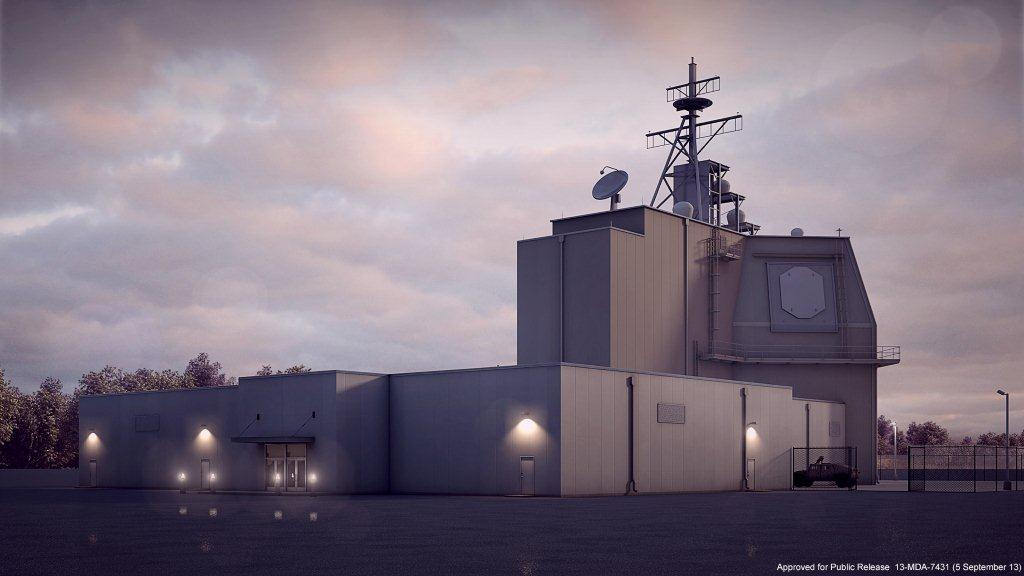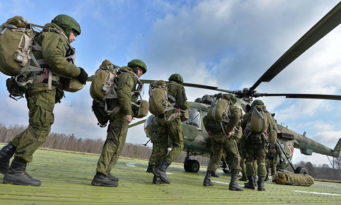Ballistic Missile Defense and 21st Century Deterrence

- By defencematters
On Thursday the 12th May, the Aegis Ashore Missile Defence System (AAMDS) was inaugurated at the Deveselu base in Romania.
Octavian Manea - Eleni Panayiotou
A core issue that will be discussed at the forthcoming NATO summit in Warsaw will be that of finding options to maintain a strong conventional deterrence and missile defense is one spectrum of capabilities in the Alliance’s 21st century deterrence toolbox. On Thursday the 12th May, the Aegis Ashore Missile Defence System (AAMDS) was inaugurated at the Deveselu base in Romania.
But what does the AAMDS do exactly? The AAMDS has many of the same components used at sea on guided-missile destroyers and cruisers, but has been adapted to perform the ballistic missile defense mission from land. In this case, in Deveselu, Romania. It is part of the European Phased Adapted Approach (EPAA) designed to protect European NATO allies, and U.S. deployed forces in the region, against current and emerging ballistic threats from the Middle East. As stated by U.S and NATO officials in general, the ballistic missile threat to the region is growing both quantitatively and qualitatively and the EPAA’s purpose is to help deter future conflicts, primarily those emanating from Iran. Essentially EPAA is used should the tactic of deterrence fail.
Several questions arise if one takes into consideration the fact that the EPAA is designed to protect against ballistic threats from the Middle East and not in fact from Russia, as has been assumed by the mass media overall (and by Russia more specifically).
There are for example some doubts about its feasibility as it is not 100% effective. We asked NATO Secretary General, Jens Stoltenberg about its real effectiveness but also about the obligation for NATO countries to improve the system, and this is what he told us:
“Firstly this is the most advanced the most comprehensive possible missile defence system that we can have. It is very sophisticated, it is very advanced and we haven’t seen anything like this in the world before. Secondly it is developed because for a very long period of time we have seen the proliferation of ballistic missiles. Countries not so far from NATO are in the process of developing their ballistic missile systems and also trying to acquire these kind of systems so therefore we are making a long-term investment, facing a long term threat and this is really vital and it’s key and it’s really an answer in the ability to defend NATO allies against all sorts of missile threats.”
In addition, U.S. Deputy Secretary Defence Robert Work emphasized that the BMD system at Deveselu has the ability to knock down the oncoming ballistic missiles onto the area:
“BMD is one of the most technically challenging operations that you can imagine. It’s like hitting a bullet with a bullet. The way we determine the event through a serious of tests and demonstrations we develop this whole probability of kill, a single shot. If the probability is too low, we will take two shots at the upcoming missile. We believe this is an extremely effective system. Sometimes we’ll take just one shot, other times two. We believe very strongly in its ability to knock down oncoming ballistic missiles.”
Inside NATO investing in BMD capabilities is no longer just a U.S. focus, but a joint allied effort. Turkey is hosting an early warning radar, in Germany there is a command and control HQ that “tries to determine when and what type of shots you should take against oncoming missiles”, UK is developing a radar that looks very far and helps cover the northern countries while Netherland and Denmark are improving theirs. This larger perspective demonstrates that Deveselu is one of the nodes in a multi-layered network. In short, as Robert Work pointed out during the Deveselu press conference “this is a system of systems that protects NATO and every time you add a new partner it makes the whole system better and I would imagine that that would continue over time.”
The inauguration of Deveselu and the Aegis Ashore Defense System is a clear message that “NATO is doing what it was designed to do 67 years ago, and that is to defend every one of the 28 allies. This is embedded in Article 5 of the Washington Treaty which was signed in 1949. And today, that Article 5 is just as important as it was in 1949”, Ambassador Lute stated. “Starting today, NATO is more secure than yesterday.”
Searching for the next - generation capabilities
But missile defense is just one spectrum of capabilities in the Alliance’s 21st century deterrence toolbox. At the forthcoming NATO summit in Warsaw the core issue that will be discussed will be that of finding options to maintain a strong conventional deterrence. The expectation of most allies in New Europe is that NATO will start fixing some of the existing force imbalances along the eastern edge of the alliance through a rotational forward land presence. But as the history of the Cold War clearly demonstrates, deterrence is not only about the promise of projecting rapid reaction forces like the VJTF, pre-deployed equipment sets or forward stationing forces.
Historically, deterrence was achieved also by investing in game-changing technological advantages which when used in the right operational approaches signalled to any potential adversaries that they would not be able to dominate a conflict. For example in the 1970s/1980s the investment in the precision guided munitions regime and their battlefield demonstrative effect changed the Soviet perception on the conventional balance of power in the European theater and were ultimately responsible for persuading “the Soviet general staff that they could not achieve their conventional objectives.(…) It really reduced the likelihood of war in Europe”, as the U.S. Deputy Secretary of Defense Robert Work emphasized recently in Brussels. It is in this context that over the past 2 years, the Pentagon was preparing the foundation for what has been called the “third offset strategy”.
At the new BMD facility in Deveselu, we discussed the philosophy behind the new offset strategy and its implications for NATO with the US Ambassador at NATO Douglas Lute.
“ The third offset strategy, this is essentially an appreciation that in order to stay in front of emerging threats, U.S. and NATO actually have to think over the horizon and imagine technologies that they will need. Because technology needs time to develop - robotics and information sharing technologies that you may need tomorrow - you may need to start developing it today and we’ve learned this in the past. We learned this with the nuclear stand off fifty or sixty years ago. We’ learned this with precision guided weaponry twenty or thirty years ago. We’ve learned it with GPS for example. So these were all technologies that were imagined long before they actually revealed them. So this third offset strategy is an idea to look over the technological horizon and imagine what you need. So the connection to NATO is that Robert Work briefed NATO on America’s technology plans for the next generation. NATO of course doesn’t build weaponry itself.
So when Secretary Work was briefing the Council in Brussels he was essentially briefing the 28 allies and saying the U.S. is thinking over the horizon and you should be thinking over the horizon too and not just investing in technologies that you need today but imagining what you’re going to need tomorrow and the day after. But it really boils down to nations. Because nations acquire capabilities and then they commit to them.”
In February during the latest NATO Defense Ministerial, Ambassador Lute explained to Defence Matters how the previous offset strategies changed the Alliance strategy: “There is an argument that at least three times in Alliance history significant technological gains have led to a significant shift in strategy, and historically the first such shift for NATO was the development and deterrence value of nuclear weapons. So this is back, all the way back to NATO’s founding. The second technology shift was a shift in the mid-1960s into the mid-1970s where precision conventional weapons tended to offset the nuclear stalemate.”
Today the Alliance might be on the verge of another strategic shift, one triggered in part by a new operational reality - the proliferation of anti-access/area-denial (A2/AD) capabilities that seriously challenge NATO’s ability to reinforce and ultimately defend its most exposed allies: “One of the things that’s cited as an example of this, this third offset, if you will, is the Russian capabilities that we see deployed in Kaliningrad, for example, or increasingly in the Crimean Peninsula, where the Russian deployment combines precision-guided surface-to-surface strike capabilities; it brings sophisticated air defense capabilities; sophisticated electronic capabilities all to one place in an effort to be able to assert influence out into international sea space and international airspace. NATO’s response to these kinds of modern capabilities is very much what we mean by 21st Century deterrence.”

















